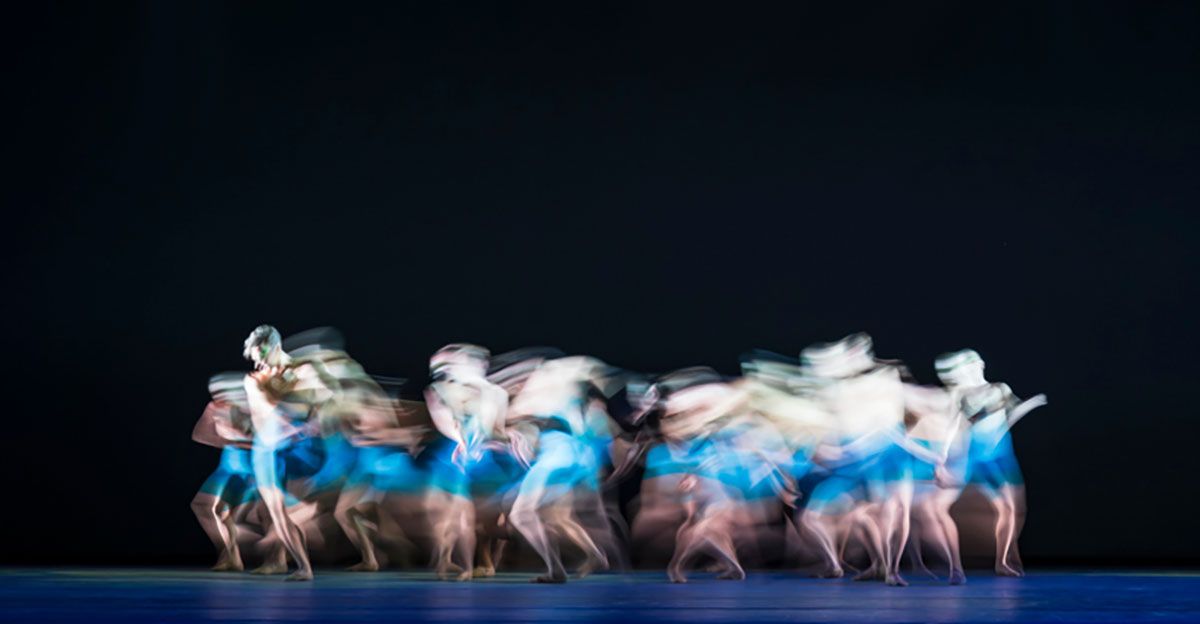The Royal Ballet in Wayne McGregor’s MADDADDAM
The Royal Ballet has just unveiled the European premiere of Wayne McGregor’s MADDADDAM, a dance-take on Margaret Atwood’s complex dystopian trilogy about extinction and survival…
 Royal Ballet in Wayne McGregor’s ‘MADDADDAM’. © @FoteiniPhoto
Royal Ballet in Wayne McGregor’s ‘MADDADDAM’. © @FoteiniPhoto
Royal Ballet
MADDADDAM
★★✰✰✰
London, Royal Opera House
14 November 2024
www.rbo.org.uk
I’m going to start with some quotes from one of the world’s greatest choreographers, George Balanchine, which says it all about narrative ballet:
“There are no mothers-in-law in ballet.” (meaning you can’t easily show complex relationships)
“In ballet, a complicated story is impossible to tell…. we can’t dance synonyms.”
“There should not need to be a synopsis in the program. The movements and the music should express everything the audience needs to know.”
For the most part, it’s very well-known advice, but like a moth to a flame, choreographer and director Wayne McGregor seems only attracted to complexity and the multi-layered. And in Margaret Atwood’s MaddAddam trilogy of books about world destruction and primitive survival, complete with flashbacks and many characters and events, you are starting with a complex plot indeed. It may be a dark and timely tale with talk of global ‘flood’ and clever bioengineering nearly doing for us - very pertinent subjects to cover in art - but my heart sank as I read the dense synopsis of the 3 act MADDADDAM with its endless list of names, organisations and strange happenings, rattled off ad infinitum. I got as far as the end of the second act words, where it finishes with “…and Act II ends where Act I began”. Cue the sound of a head repeatedly hitting a brick wall. But go read the synopsis yourself because I won’t attempt to cover the Byzantine complexity here.
Rather than looking to simplify, McGregor involves many fantastic creatives, increasing the number of ideas and spectacle and giving a total theatre experience. To name a few: costume designs by Gareth Pugh, Lucy Carter on lighting, Ravi Deepres for film/projections, sound designs by Chris Ekers and above all else, an outstanding custom score from Max Richter. Collectively, with the Royal Ballet dancers, these are tremendous ingredients. But even adding in spoken voice-overs to explain more of what’s happening, it doesn’t really gel into a coherent piece of storytelling that makes you care or truly draws you in. In terms of total theatre, it’s worth noting that the Royal Opera House has many restricted views, so not everybody will see the full projections. And some of the voice-overs are in a muffled computer voice that can be difficult to understand.
Because of the density of the plot, everything moves at pace, and in the first act, the introduction of characters seems hurried and in all the confusion and parade of ideas, you don’t connect with much. A duet, which might usually stir emotions, seems curiously sterile and perfunctory. In Act 2, performed to recorded music rather than live orchestra, McGregor’s choreography seems on more familiar abstract territory, and it starts with some terrific work for the corps - the stage shimmers with sharp, angular action. You get the spine-tingling feeling that Chroma (2006) delivered all those years ago and which made McGregor’s name in the House. And more good group dancing follows if, by this point, I’ve long since ceased to try and follow any narrative.
I may be clutching at straws, but the last act shows some hope for the future. Yes, the narrative is about civilisation, after a fashion, rebuilding itself (yeah!), but I’m talking about McGregor and the artistic team getting to grips with narrative and making us care as opposed to conjuring spectacle. The build-up to the end is slow and rather masterful, with Richter’s deeply moving orchestration mirrored by movement that is notably more human and flowing than McGregor often shows us. The main characters reappear, and the stage slowly swells with more and more dancers that visually, and with the music aurally, touch us - we feel palpable hope for humankind. It’s rather awe-inspiring, and I hope that approach can be coupled with economy of characters and clear storytelling another time. We’ve been here before, but better - the last act of Woolf Works, McGregor’s Virginia Woolf ballet, also with a Max Richter score and Deepres film, was profoundly touching and made mightier because we all absolutely understood what was going on character-wise. Oh, that it had been the same with MADDADDAM.
It goes without saying that the Royal Ballet dancers, led out by Joseph Sissens, Fumi Kaneko and William Bracewell, did their damndest to sell the strange drama. But the duet that jumped out most to me was for Melissa Hamilton and Gary Avis in abusive relationship, chillingly grim and for once, I was glad it didn’t go on too long.